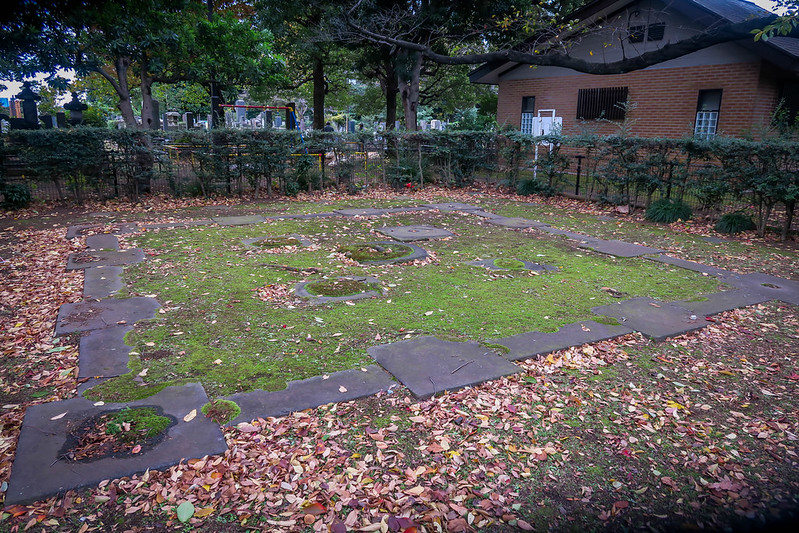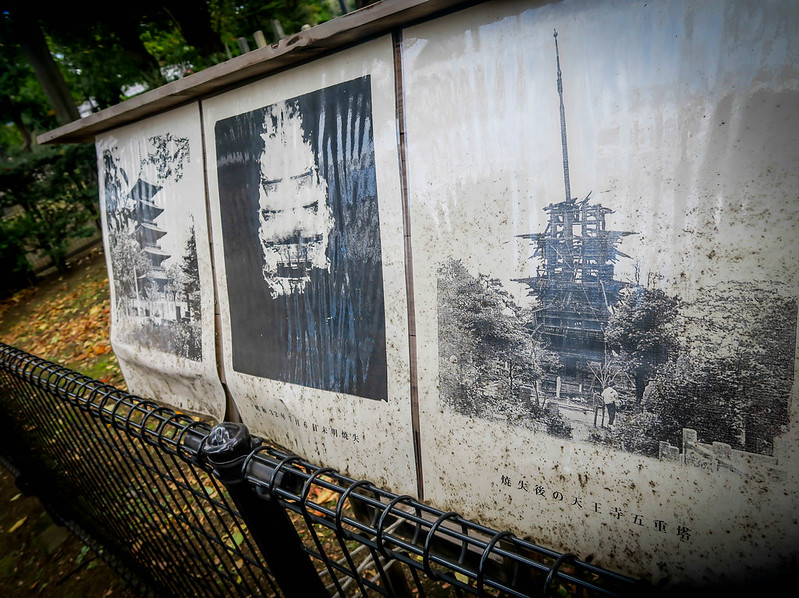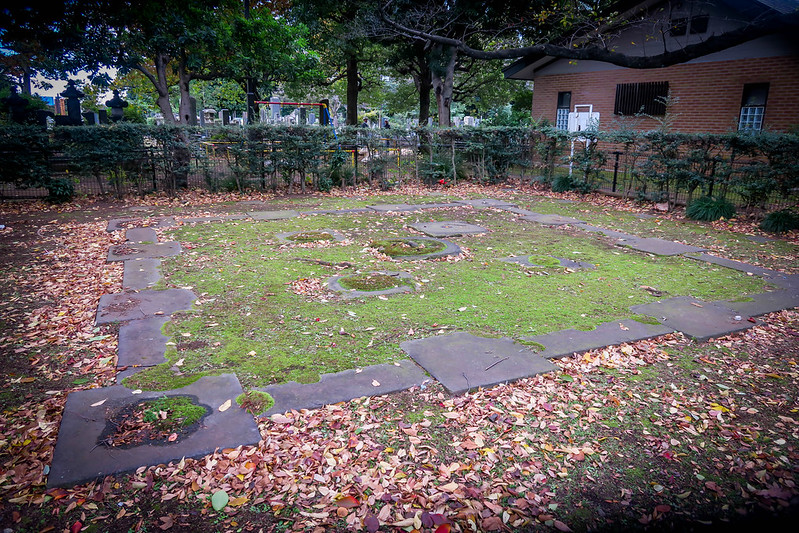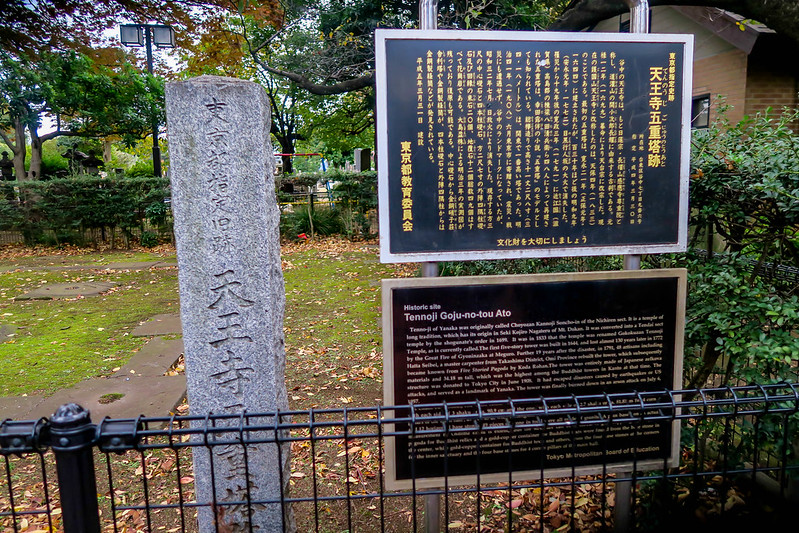
Not far from Tennoji Temple and the Yanaka Cemetery is the ruins of the Tennoji Goju-no-tou Ato, the site of the beautiful five-storied pagoda. A cultural landmark of Yanaka.
While walking through Yanaka, I noticed a group looking at a section across from the cemetery.
Many of them were people in their 70s and 80s and I could hear them discussing how they remember the pagoda and looking at these images that were displayed right in front of the ruins. Some of them looked distraught and immediately, I had to see why some of them looked bothered.


Originally known as Choyozan Kannoji Soncho-in of the Nichiren sect, with origins in Seki Kojiro Nagateru of Mt. Dokan. The five-story tower was built in 1644 and lost almost 130 years later in 1772 by the Great Fire of Gyoninzaka at Meguro.
19-years-later, in 1791, 48 artisans including Hatta Seibei, a master carpenter from Takashima District, Omi Province rebuilt the tower and famous Meiji Period author, Koda Rohan would call it the Five Storied Pagoda in his novella “Gojunoto” (November 1891) featured in the newspaper Kokkai.
The pagoda was made entirely of Japanese zelkova materials and it was 112 feet (34.18 meters) tall, the highest among the Buddhist towers in the Kanto region.
The pagoda was donated to Tokyo City in 1908 and has escaped major disasters, from earthquakes and the bombings of World War II and served as a landmark of Yanaka.
But in 1957, the unthinkable happened.
The pagoda was on fire at 3:00 a.m. on July 6, 1957 and as they were able to extinguished the fire, the pagoda was destroyed. And laying in the ruins were the charred bodies of a man and woman.
While the identities of the two were difficult to identify because their bodies were too charred, near the body was a thimble. And from the thimble, they were able to identify the bodies.
It was revealed that the thimble belonged to a seamstress in her twenties from Tokyo and the man was her middle-aged and married lover and both were having an affair.
Both individuals were missing and it was later revealed that the couple had committed suicide and burned themselves at the pagoda to atone for their adulterous relationship.
The destruction of this major cultural asset shocked people worldwide and the pagoda was never rebuilt and only its five foundation stones lie in the area.
While the blueprints of the pagoda were discovered by researchers of the Tokyo University of the Arts in 2007 and a movement to rebuild the pagoda has been discussed, the location is a historical site.
There are three adaptations that were made of Koda Rohan’s novella “Goju no To”. One produced in 1944 and a film released in 2009, directed by Atsushi Funahashi titled “Deep in the Valley”.
According to the synopsis from the “Deep in the Valley” website:

Looking at the before and after images posted in front of the ruins is shocking. And one can only imagine the thoughts of locals and those who visited the pagoda, to find out that the cultural asset and landmark in Yanaka was destroyed.
Definitely most unfortunate.
